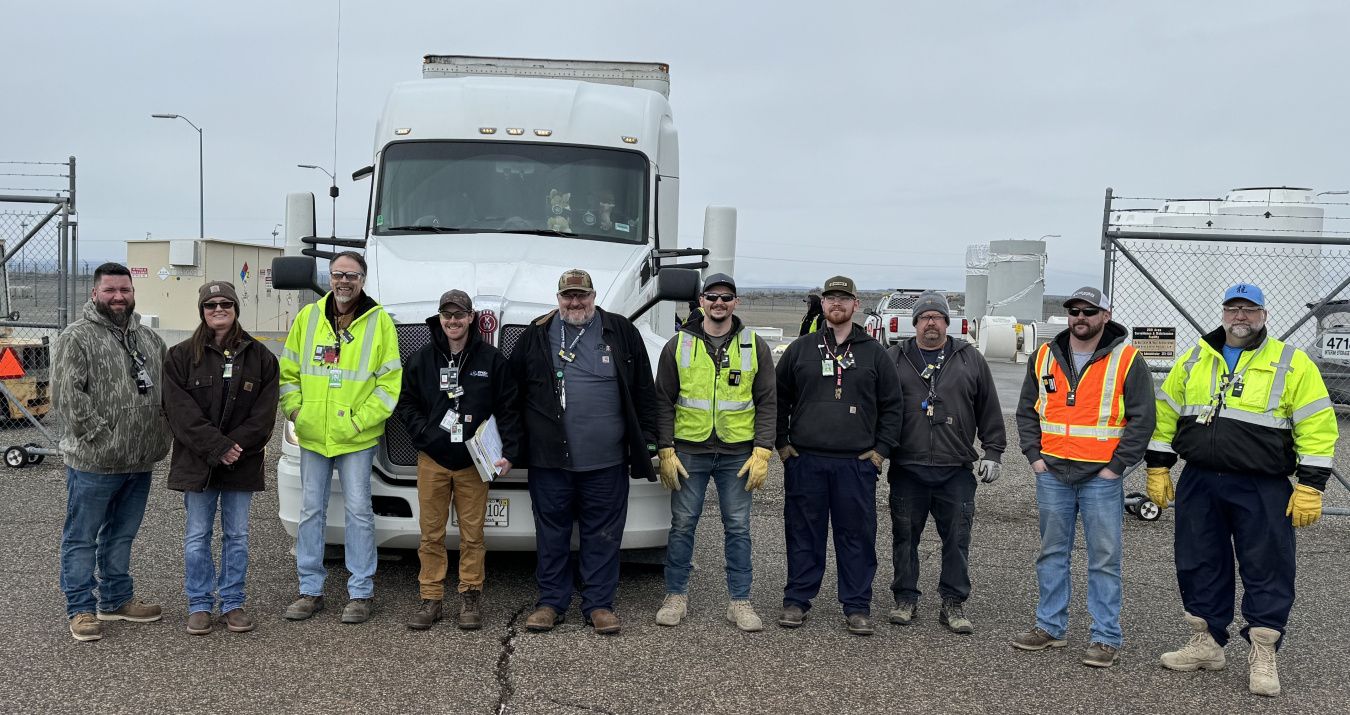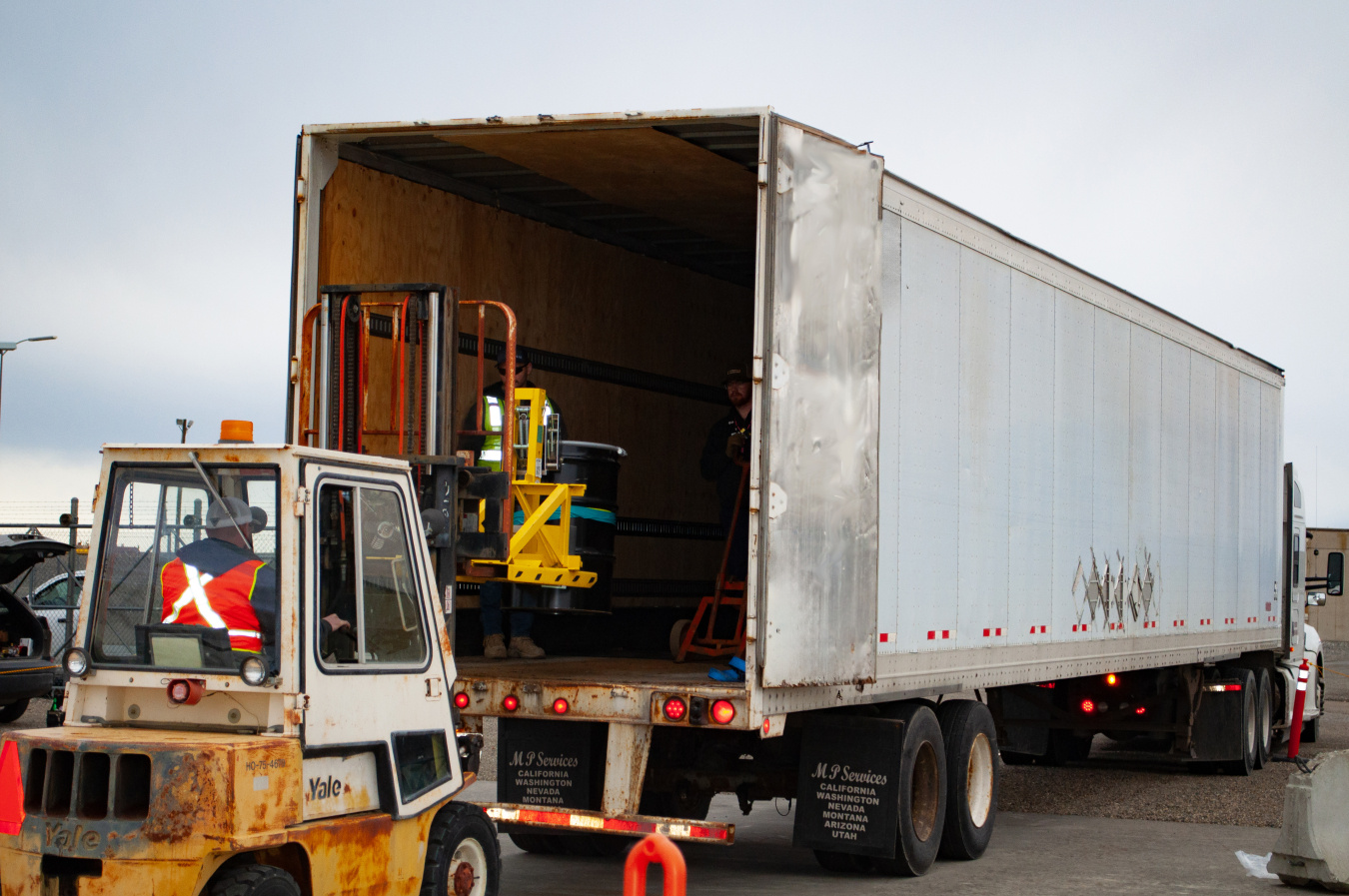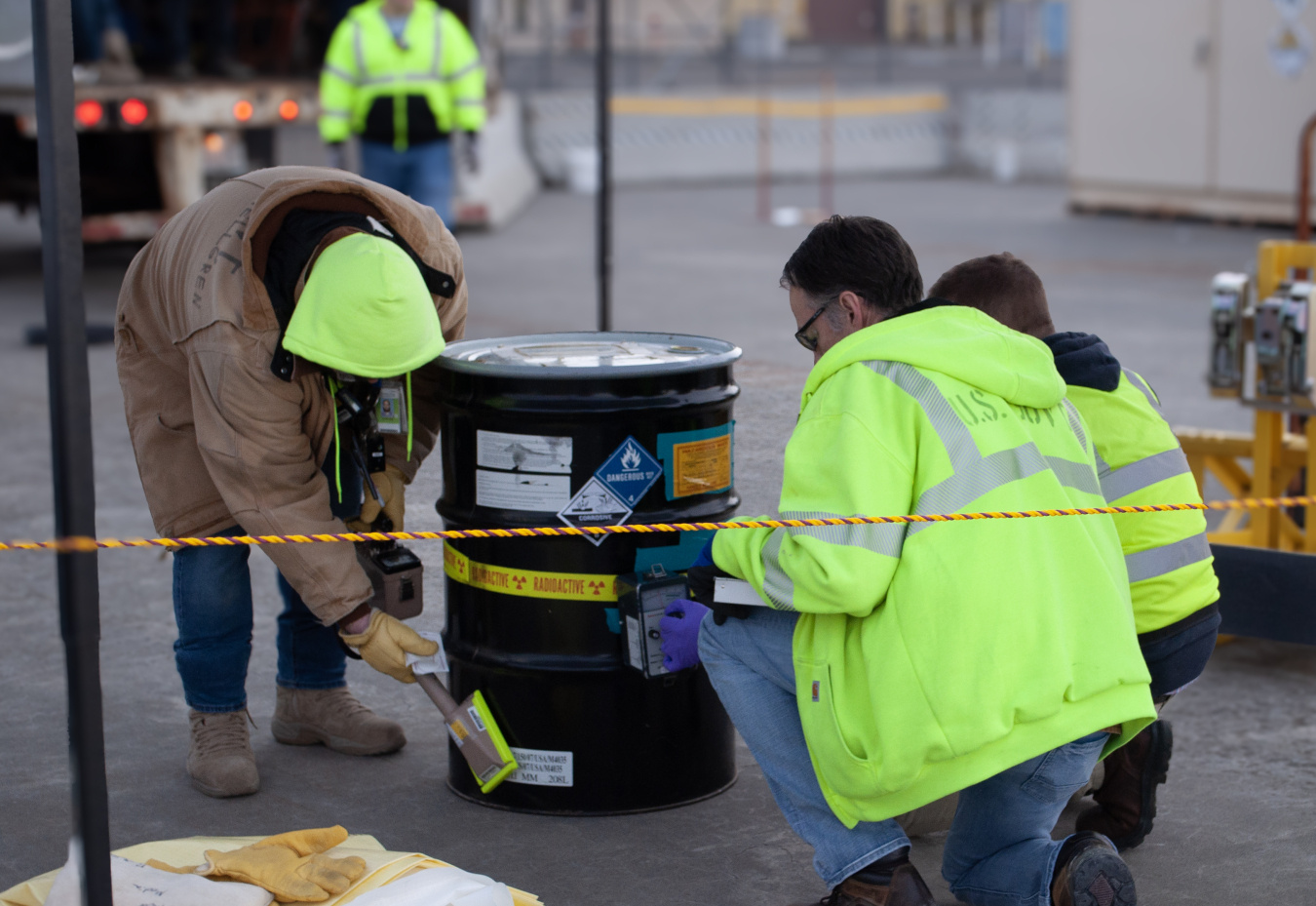Recent completion of a project at the Hanford Site marked a significant accomplishment, as crews from EM contractor Central Plateau Cleanup Company (CPCCo) loaded and shipped 15 drums of sodium waste from the site’s former research reactors for offsite treatment.
Office of Environmental Management
April 2, 2024
Workers with Hanford Site contractor Central Plateau Cleanup Company celebrate the completion of shipment of sodium waste off the Hanford Site. From left: Brandon Matosich, field work supervisor; Tina Carter, field work supervisor; Andy Mix, shipper; Nick Sargent, shipper; Dave Stewart Jr., nuclear chemical operator; Ivan Borshch, driver; Cosmo Zampelli Jr., deactivation & decommissioning; Sean Groff, deactivation & decommissioning; Zach Smith, driver; and Jim Drake, nuclear chemical operator.
RICHLAND, Wash. — Recent completion of a project at the Hanford Site marked a significant accomplishment, as crews from EM contractor Central Plateau Cleanup Company (CPCCo) loaded and shipped 15 drums of sodium waste from the site’s former research reactors for offsite treatment.
The waste has been stored since 2012 near Hanford’s Fast Flux Test Facility (FFTF), a former sodium-cooled nuclear research and test reactor that operated from 1982 to 1992.
FFTF was shut down in 1993 and eventually placed in long term surveillance and maintenance after deactivation and decommissioning activities were completed in 2009.

A worker with Hanford Site contractor Central Plateau Cleanup Company loads a drum of sodium waste at the Hanford Site near Richland, Washington, for transportation to an offsite treatment facility. The waste is treated to meet environmental protection requirements for a return to Hanford for safe disposal.

Sodium is challenging to manage and treat, in large part because it is corrosive and flammable.
“Our planning and preparation to ship this difficult-to-handle waste have ensured a safe treatment and disposal pathway for the sodium,” said Andy Wiborg, EM project director at Hanford. “Completion of this project eliminates a key risk on the Hanford Site.”
The waste was sent to an offsite facility, where it will be treated and repackaged to meet state and federal standards for return to the Hanford Site and safe disposal. When returned to Hanford, the drums will be disposed of in low-level burial grounds near the Central Waste Complex in Hanford's 200 West Area.
“Shipment of this sodium waste marks another significant achievement in our risk-reduction mission as we prepare for 24/7 operations at Hanford,” said Randy May, CPCCo field operations manager.
To receive the latest news and updates about the Office of Environment Management, submit your e-mail address.

